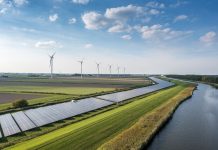Could this new portable water filtration system from the University of Austin be the solution to the global water crisis?
The University of Texas at Austin has developed a groundbreaking portable water filtration solution. More than 2 billion people, a quarter of the world’s population, lack access to clean drinking water, and this new system offers a promising solution to this pressing issue.
How the filtration system works
The newly developed water filtration system introduces a portable, affordable, and efficient method to decontaminate water from nearby streams and rivers, making it suitable for consumption.
The researchers, led by Guihua Yu, a professor of materials science at the Cockrell School of Engineer’s Walker Department of Mechanical Engineering and Texas Materials Institute, emphasise the importance of addressing particle-polluted water, particularly in remote and underdeveloped regions where reliance on contaminated water sources is commonplace.
The research: Tackling particle-polluted water
The research published recently in Nature Sustainability outlines the significant advantages of the new filtration system over existing commercial options.
Current portable water filtration methods, predominantly based on filter paper and microporous membranes, filter out around 40% and 80% of particles larger than 10 nanometers. However, the newly developed system boasts a catch rate of nearly 100% for these particles.
More than 2 billion people, a quarter of the world’s population, lack access to clean drinking water
How does it work?
The key innovation lies in an intertwined web of nanocellulose fibres forming a hydrogel filter. This filter efficiently captures particles while allowing the newly cleaned water to pass through.
The system’s simplicity is one of its key features, as all users need to do is collect water with a syringe and inject it through the filter. The system takes care of the rest, producing clean, drinkable water.
The materials used in the filtration system are low-cost, sustainable, and readily available. The nanocellulose fibres create a biodegradable filter that can be used up to 30 times before replacement is necessary. The system’s versatility is evident in its successful testing with various water sources, including muddy water, river water, and water contaminated with microplastics.
Chuxin Lei, the lead author and a graduate student in Yu’s lab, highlights the urgency of the situation, noting, “There is an urgent need for simple, universal, and efficient materials and devices for purifying particle-contaminated water, which should be able to help people around the world obtain clean water.”
There is an urgent need for simple, universal, and efficient materials and devices for purifying particle-contaminated water
The research team’s reason stems from one of the United Nations’ Sustainable Development Goals: improving drinking water standards and sanitation worldwide. The UN aims for a sixfold increase in drinking water availability by 2030, making innovations like this filtration system crucial in achieving these goals.
The system has been tested with syringes as large as 1.5 litres, addressing about 40% of an individual’s daily drinking water needs. The researchers plan to develop the technology further to tackle global drinking water needs at a larger scale, potentially providing a scalable solution to this critical issue.
Editor's Recommended Articles
-
Must Read >> Canada’s natural resources: Supplying the world













